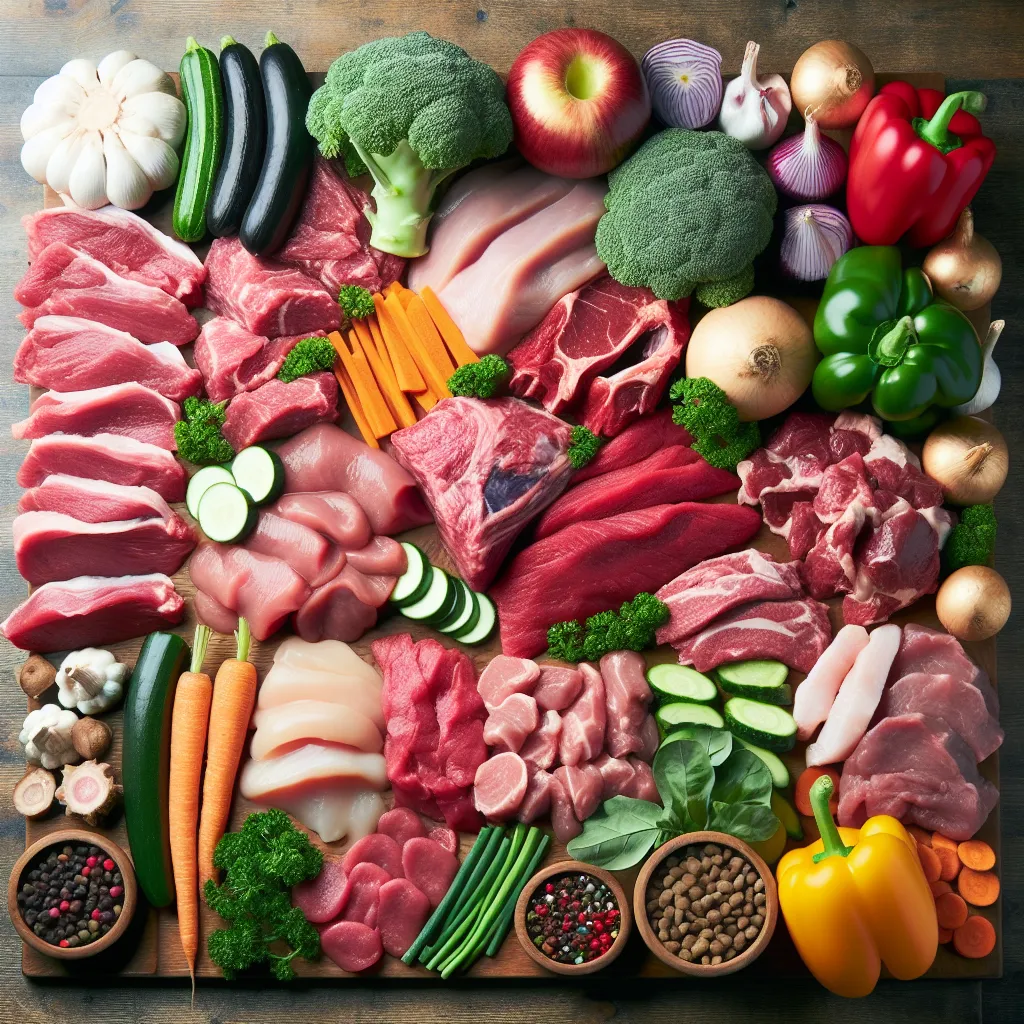The Benefits of Raw Dog Food Diets
Raw dog food diets, also known as BARF (Biologically Appropriate Raw Food) diets, have been gaining popularity among dog owners in recent years. This type of diet involves feeding dogs uncooked meat, bones, and organs, as well as fruits and vegetables. While there are potential risks associated with raw diets, there are also several benefits that advocates of raw dog food diets often highlight.
One of the main advantages of raw dog food diets is the potential for improved dental health. Chewing raw meaty bones can help keep your dog’s teeth clean and healthy, reducing the risk of dental problems such as plaque and tartar buildup. Additionally, a diet rich in raw, natural foods may contribute to better digestion and nutrient absorption, leading to overall improved health and well-being for your furry friend.
Proponents of raw dog food diets also argue that these diets more closely resemble the natural diet of dogs’ wild ancestors. Advocates believe that by feeding dogs a diet similar to what their ancestors consumed, they can better meet dogs’ nutritional needs and support their overall health. This includes providing essential nutrients and enzymes that may be destroyed during the cooking process of commercial dog foods.
Furthermore, some dog owners report that their pets have experienced shinier coats, increased energy levels, and better weight management after switching to a raw food diet. This is often attributed to the high-quality protein and healthy fats found in raw meats and other natural ingredients, which can positively impact a dog’s physical condition.
It’s important to note that while raw dog food diets offer potential benefits, they may not be suitable for every dog, and it’s crucial to consult with a veterinarian before making any significant changes to your pet’s diet. Additionally, proper handling and storage of raw meat are essential to minimize the risk of bacterial contamination. Ultimately, the decision to transition to a raw dog food diet should be carefully considered based on the individual needs and circumstances of each dog.
Potential Risks of Raw Dog Food Diets
While raw dog food diets have gained popularity among pet owners, it’s important to consider the potential risks associated with this feeding method. One of the major concerns with raw dog food diets is the risk of bacterial contamination. Raw meat can be a breeding ground for harmful bacteria such as Salmonella and E. coli, which can not only pose a threat to the dog’s health but also to the humans handling the food.
Furthermore, raw diets may lack essential nutrients unless carefully balanced, potentially leading to nutritional deficiencies in dogs. This is particularly concerning for pet owners who may not have the expertise to ensure that the raw diet meets all of their dog’s nutritional needs.
Another potential risk of raw dog food diets is the possibility of gastrointestinal obstruction from consuming raw bones. While chewing on raw bones can be beneficial for dental health, there is a risk of the bones splintering and causing internal damage to the dog’s digestive tract.
It’s also worth noting that raw dog food diets may not be suitable for dogs with compromised immune systems, as they are more susceptible to the risks associated with bacterial contamination.
Before switching to a raw dog food diet, it’s crucial for pet owners to weigh these potential risks and consult with a veterinarian to make an informed decision that prioritizes their dog’s health and well-being.
Tips for Transitioning to a Raw Dog Food Diet
Transitioning your dog to a raw food diet can be a beneficial choice for their health, but it’s important to do so gradually and with care. Here are some tips to help make the transition as smooth as possible.
First and foremost, consult with your veterinarian before making any significant changes to your dog’s diet. They can provide valuable insight and guidance specific to your dog’s individual needs and health status.
When starting the transition, begin by incorporating small amounts of raw food into your dog’s current diet. This gradual approach can help prevent digestive upset and allow your dog’s system to adjust to the new food.
Ensure that the raw diet is nutritionally balanced to meet your dog’s needs. A complete and balanced raw diet should include muscle meat, organ meat, bones, and vegetables. Consider purchasing pre-made raw food or consulting with a canine nutritionist to create a well-rounded diet plan.
Monitor your dog closely during the transition period. Look out for any signs of digestive issues, allergies, or other adverse reactions. If you notice any concerning symptoms, adjust the transition process as needed and seek advice from your veterinarian.
Additionally, be mindful of food safety when handling and preparing raw food for your dog. Cleanliness and proper storage are essential to minimize the risk of bacterial contamination for both your dog and your household.
Overall, transitioning to a raw food diet for your dog requires careful planning and attention to detail. By taking a gradual and informed approach, you can help support your dog’s health and well-being through a balanced and nutritious diet.

